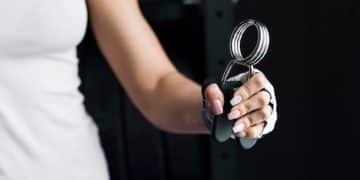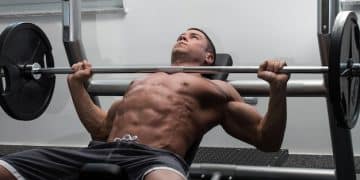Improve Your Deadlift: Strength Accessory Routine Guide
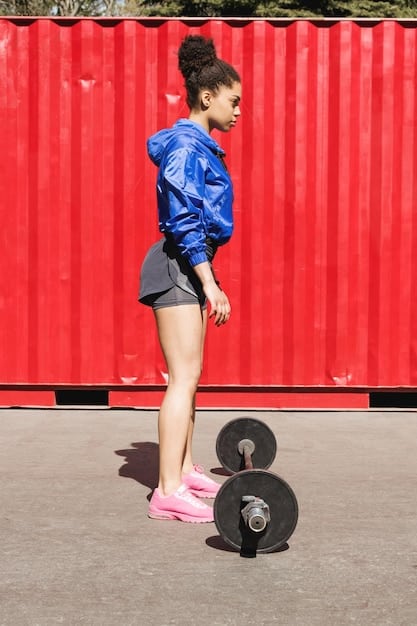
To significantly improve deadlift strength, a well-structured accessory exercise routine is crucial, targeting weak points like back, glutes, and grip with specific movements that complement the main lift for enhanced power and stability.
The deadlift stands as a foundational movement in strength training, revered for its ability to build overall power, improve posture, and enhance functional movement. Yet, many lifters encounter plateaus, struggling to add significant weight or maintain proper form. This challenge often stems not from the deadlift itself, but from weaknesses in complementary muscle groups and movement patterns. This article will explore how to Improve Your Deadlift: The Accessory Exercise Routine for Strength, delving into a strategic approach to accessory work that addresses common deficiencies and catapults your deadlift performance to new heights. We’ll move beyond generic advice, providing actionable insights from an experienced perspective.
Understanding the Deadlift: Beyond the Basics
The deadlift is often seen as a simple lift: pick up a heavy object from the floor. However, its true complexity lies in the synergistic action of numerous muscle groups and precise biomechanical coordination. It’s a full-body movement, engaging everything from your feet to your traps, demanding an intricate balance of strength, stability, and mobility. Understanding these components is the first step toward effective accessory programming.
Many lifters focus solely on increasing the weight on the bar, neglecting the underlying weaknesses that limit their progress. A strong deadlift isn’t just about raw power; it’s about efficient force transfer, a stable core, powerful glutes and hamstrings, and a resilient back. When any of these links in the chain are weak, the entire lift suffers, leading to plateaus or, worse, injury.
Muscles Engaged and Common Weaknesses
Breaking down the deadlift allows us to pinpoint areas that commonly need reinforcement through accessory work. While the posterior chain—glutes, hamstrings, and erector spinae—are primary movers, other muscles play critical supporting roles. Ignoring these supporting players is a common pitfall.
- The glutes are essential for hip extension and finishing the lift strong. Weak glutes often lead to a rounded back and difficulty locking out.
- Hamstrings contribute significantly to the initial pull off the floor and hip extension. Tight or weak hamstrings can limit depth and power.
- Erector spinae muscles provide crucial spinal stability throughout the lift. A weak lower back is a primary limiting factor and injury risk.
Furthermore, latissimus dorsi muscles help keep the bar close to the body, increasing leverage, and forearms and grip strength are paramount for holding heavy loads. Addressing each of these areas systematically through targeted accessory exercises creates a more robust and capable deadlift. It’s about building a well-rounded foundation, not just chasing numbers.
The Philosophy Behind Accessory Exercises for Deadlift
Accessory exercises are not random add-ons; they are strategic tools designed to complement your main lifts by reinforcing weak links, improving technique, and enhancing overall athletic performance. For the deadlift, this means selecting movements that directly address the specific demands of the lift and the individual’s unique deficiencies, moving beyond the obvious.
The goal is to transfer strength gained from these supplemental movements directly back to the deadlift. This isn’t about doing more deadlifts; rather, it’s about making your deadlifts more efficient and powerful by strengthening the weak points that prevent progress. Think of it as tuning an engine; each component must be optimized for maximum output.
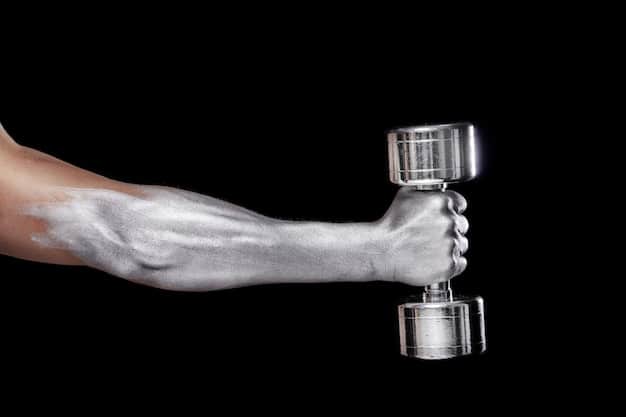
Targeting Specific Phases of the Deadlift
A successful deadlift can be broadly divided into three phases: the setup and initial pull, the mid-lift (passing the knees), and the lockout. Each phase presents unique challenges and relies on different muscle groups to varying extents. Accessory exercises can be tailored to strengthen each of these segments.
- Initial Pull: This phase relies heavily on leg drive, hamstring strength, and the ability to maintain a strong back angle. Exercises like deficit deadlifts or pause deadlifts can expose weaknesses here.
- Mid-lift: As the bar passes the knees, the glutes and erector spinae become critically involved. Sticking points often occur here due to weakness in these muscle groups or a breakdown in bracing.
- Lockout: The final squeeze, where the hips come through and the shoulders are pulled back, is heavily reliant on glute and upper back strength. Many lifters struggle with a soft lockout.
By understanding where your deadlift typically breaks down, you can prioritize accessory exercises that directly address those specific points. This targeted approach is far more effective than a generic routine, ensuring that every exercise contributes meaningfully to your main goal.
Key Accessory Exercises for a Stronger Deadlift
This section outlines a curated selection of accessory exercises, chosen for their proven efficacy in strengthening the muscles and improving the mechanics crucial for a superior deadlift. These are not merely suggestions but foundational movements that form the backbone of a comprehensive routine. Each exercise targets specific weaknesses and contributes to overall deadlift proficiency, providing a holistic approach to strength development.
Integrating these exercises wisely into your training program, with appropriate volume and intensity, will yield significant returns on your deadlift. Remember, consistency and proper form are paramount to deriving full benefit from these movements.
Lower Back and Core Strength
A strong, stable core and resilient lower back are non-negotiable for a powerful and safe deadlift. These exercises directly target the muscles responsible for spinal stability and hip extension, mitigating the risk of injury and enabling greater force production. Without a solid foundation here, the entire lift is compromised.
- Good Mornings: Excellent for strengthening the posterior chain, particularly the hamstrings and lower back, while mimicking the hip hinge pattern. Focus on controlled eccentric motion and maintaining a neutral spine.
- Reverse Hyperextensions: Superb for isolating the lower back, glutes, and hamstrings without compressive spinal loading. This builds resilience and blood flow in critical areas, aiding recovery.
- Back Extensions (45-degree or GHD): Directly targets the erector spinae. These help build endurance in the lower back, crucial for maintaining proper posture throughout a heavy deadlift.
These movements are about building robust strength and endurance in the posterior chain, allowing you to maintain a rigid torso and transfer force efficiently from the ground up during the deadlift. They are foundational for improving your ability to brace effectively and prevent spinal flexion under load.
Glute and Hamstring Development
The glutes and hamstrings are the true powerhouses of the deadlift, driving hip extension and contributing immensely to both the initial pull and the lockout. Neglecting these muscle groups is a common mistake that leads to stalled progress. These exercises ensure comprehensive development, targeting strength, power, and even muscle hypertrophy for enhanced performance.
By strengthening these key muscle groups, you improve your ability to accelerate the bar off the floor and drive through the mid-range and lockout, which are often challenging phases for many lifters. A strong posterior chain is synonymous with a strong deadlift.
Targeted Accessory Work for the Lower Body
Incorporating a variety of movements that challenge the glutes and hamstrings in different ways assures balanced development. This prevents muscular imbalances and contributes to a more explosive and powerful deadlift lift. These exercises are not just for strength but also for improving neural drive to these essential muscle groups.
- Romanian Deadlifts (RDLs): Focus on hamstring and glute eccentric strength and hip hinge mechanics. RDLs are excellent for reinforcing the feeling of pulling with your hamstrings and engaging the glutes.
- Glute-Ham Raises (GHRs): One of the most effective exercises for targeting the hamstrings, particularly their role in knee flexion and hip extension. This directly translates to hamstring power during the pull.
- Hip Thrusts: Unrivaled for direct glute activation and strength. Stronger glutes mean a more powerful lockout and better hip drive throughout the lift, helping to finish strong.
These exercises should be performed with a focus on muscular contraction and control, rather than simply moving weight. This ensures that the intended muscle groups are truly engaged and strengthened, directly supporting your deadlift goals.
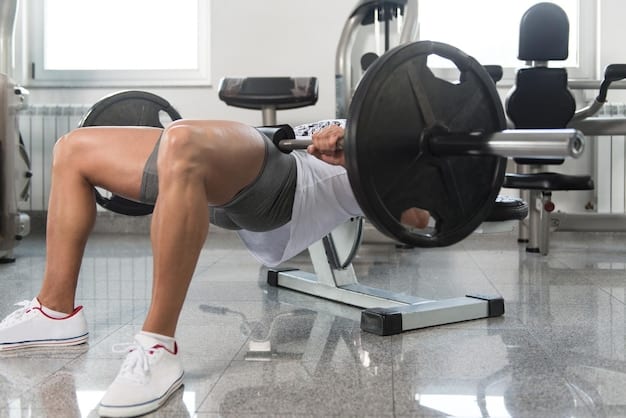
Grip and Upper Back Reinforcement
Often overlooked, grip strength and a powerful upper back are critical for maintaining control of the bar and providing a stable platform for the lift. A weak grip is a common limiting factor, forcing lifters to drop the bar prematurely, while a weak upper back can lead to rounding and an inefficient bar path. These exercises are designed to address these areas directly and comprehensively.
Without adequate grip and upper back strength, even the strongest legs and glutes will struggle to complete a heavy deadlift. These accessory movements ensure that your entire pulling chain is robust, from your fingertips to your traps.
Building a Solid Pulling Foundation
Reinforcing grip and upper back strength is essential for not only deadlifts but for overall pulling movements. These exercises build the necessary endurance and power to keep the bar close and maintain optimal posture throughout the lift, preventing energy leaks and improving mechanical advantage.
- Rack Pulls: Allow you to overload the upper back and improve lockout strength without taxing the lower back or initial pull too much. Excellent for building confidence with heavier loads.
- Barbell Rows (Pendlay or Supported): Develop the pulling strength of the lats and upper back muscles. This helps keep the bar tight to the body during the deadlift, optimizing leverage.
- Farmer’s Walks: Unparalleled for developing crushing grip strength and full-body core stability. This functional exercise directly translates to the ability to hold heavy deadlifts.
- Plate Pinches: Isolate and strengthen the thumb and finger grip, which is crucial for maintaining a secure hold on the bar, especially during prolonged sets.
Integrating these movements consistently will not only enhance your deadlift performance but also improve your overall pulling capacity and grip endurance, which are valuable attributes for strength athletes.
Programming Your Accessory Routine for Optimal Results
Simply knowing which exercises to perform is not enough; effective programming is crucial for maximizing their benefits without overtraining. Your accessory routine should be thoughtfully integrated into your overall training schedule, taking into account your current strength levels, recovery capacity, and specific deadlift goals. The aim is to supplement, not supplant, your main lift.
Finding the right balance of volume, intensity, and frequency for accessory work is key to making consistent progress. This requires paying attention to your body’s signals and being willing to make adjustments as needed. A well-programmed accessory routine complements your main training beautifully.
Integration, Volume, and Progression
Strategic placement of accessory exercises is vital. They should ideally be performed after your main deadlift sets or on separate training days, to ensure you are fresh for your primary lift. The volume and intensity should be carefully scaled to avoid interfering with recovery or causing excessive fatigue.
- Frequency: Aim for 2-3 sessions per week dedicated to deadlift accessory work, spread out to allow for sufficient recovery.
- Volume and Intensity: For most accessory exercises, 3-4 sets of 8-12 repetitions are a good starting point, focusing on controlled movement and muscular contraction. For grip work, higher reps or timed holds are often more effective.
- Progression: Like your main lifts, accessory exercises should be progressively overloaded over time. This could mean increasing weight, reps, sets, or decreasing rest times.
Listen to your body’s feedback. If you find yourself overly fatigued or plateauing in your main deadlift, it might be a sign to adjust the volume or intensity of your accessory work. The goal is sustainable improvement, not burnout. Consistency over time will yield the most significant gains, ensuring steady, measurable progress.
| Key Area | Recommended Accessory |
|---|---|
| 💪 Lower Back & Core | Good Mornings, Reverse Hyperextensions |
| 🍑 Glutes & Hamstrings | Romanian Deadlifts (RDLs), Hip Thrusts |
| 🤝 Grip & Upper Back | Farmer’s Walks, Rack Pulls, Barbell Rows |
| 🔄 Technique & Efficiency | Pause Deadlifts, Deficit Deadlifts |
Frequently Asked Questions about Deadlift Accessories
▼
Incorporating deadlift accessory exercises 2-3 times per week is generally effective. You can perform them after your main deadlift session or on separate days dedicated to accessory work. This frequency allows for adequate muscle stimulation and recovery, promoting consistent strength gains without overtraining.
▼
For most deadlift accessory exercises, a rep range of 8-12 repetitions for 3-4 sets is typically ideal. This range promotes muscle hypertrophy and strength endurance, which are beneficial for improving deadlift performance. For grip-focused exercises, higher reps or timed holds are often more effective.
▼
While accessory exercises cannot guarantee injury prevention, they significantly reduce the risk by strengthening weak links and promoting muscular balance. By reinforcing the glutes, hamstrings, core, and back, they enhance stability and proper movement mechanics, which are crucial for safe and effective deadlifting. They build resilience in supporting structures.
▼
It is generally recommended to perform accessory exercises after your main deadlift sets. This ensures that you are fresh and have maximum energy for your primary lift, preventing fatigue from accessory work from hindering your deadlift performance. However, some lifters may integrate a light accessory as a warm-up.
▼
Results vary based on individual factors like training consistency, current strength level, and adherence to proper form. However, many lifters begin to notice improvements in technique, stability, and even increased weight on the bar within 4-8 weeks of consistent, well-programmed accessory work. Patience and dedication are key.
Conclusion: The Path to a Dominant Deadlift
Mastering the deadlift is an ongoing journey that extends far beyond simply lifting heavy weight. It demands a holistic approach, where foundational strength, refined technique, and the intelligent application of accessory exercises converge. By diligently addressing weaknesses in your posterior chain, core, grip, and upper back, you build a resilient and powerful physique capable of unlocking your true deadlift potential. Remember, consistency, proper form, and a commitment to progressive overload in your accessory routine are the cornerstones of lasting progress. Embrace these principles, and watch your deadlift reach new heights.
